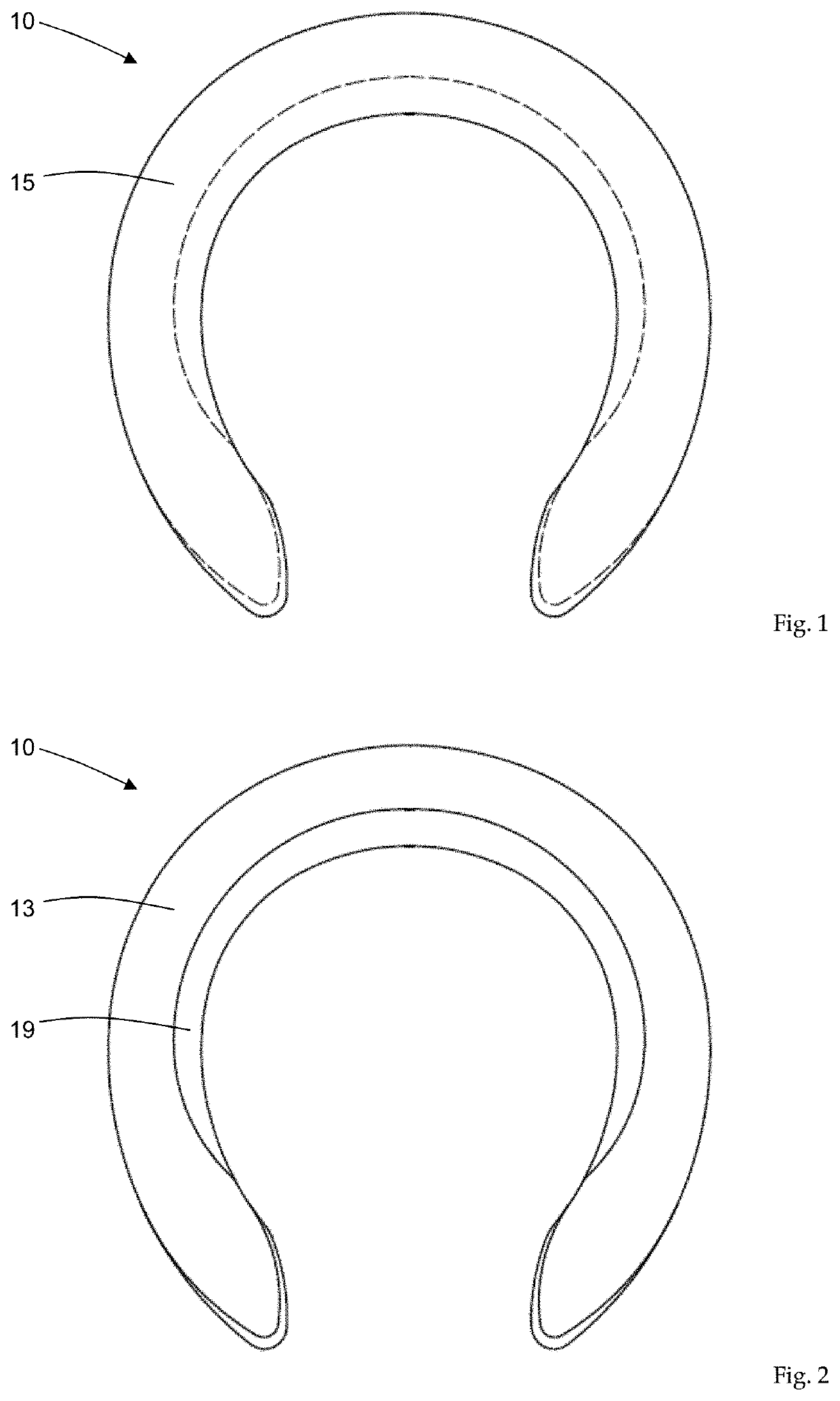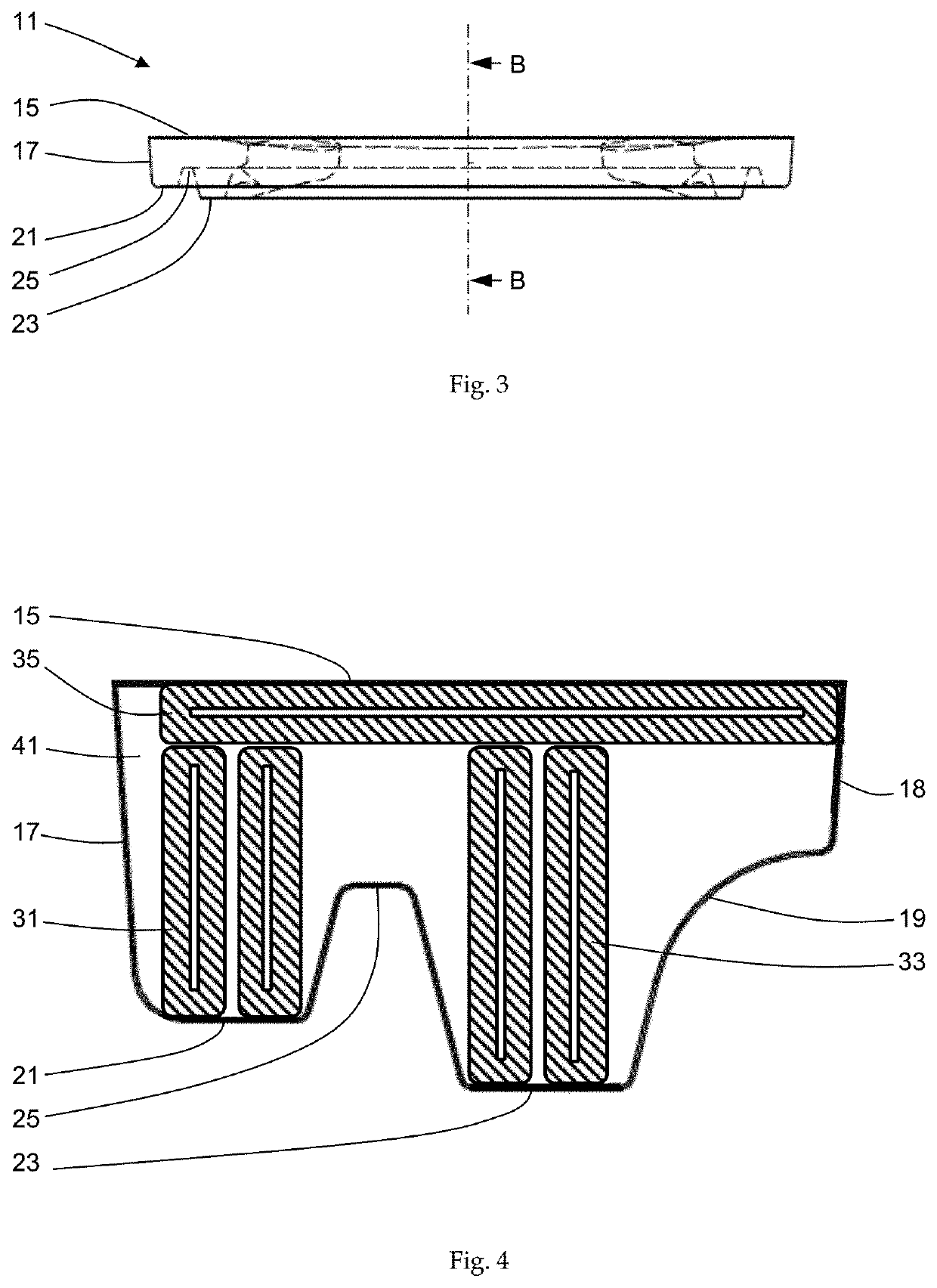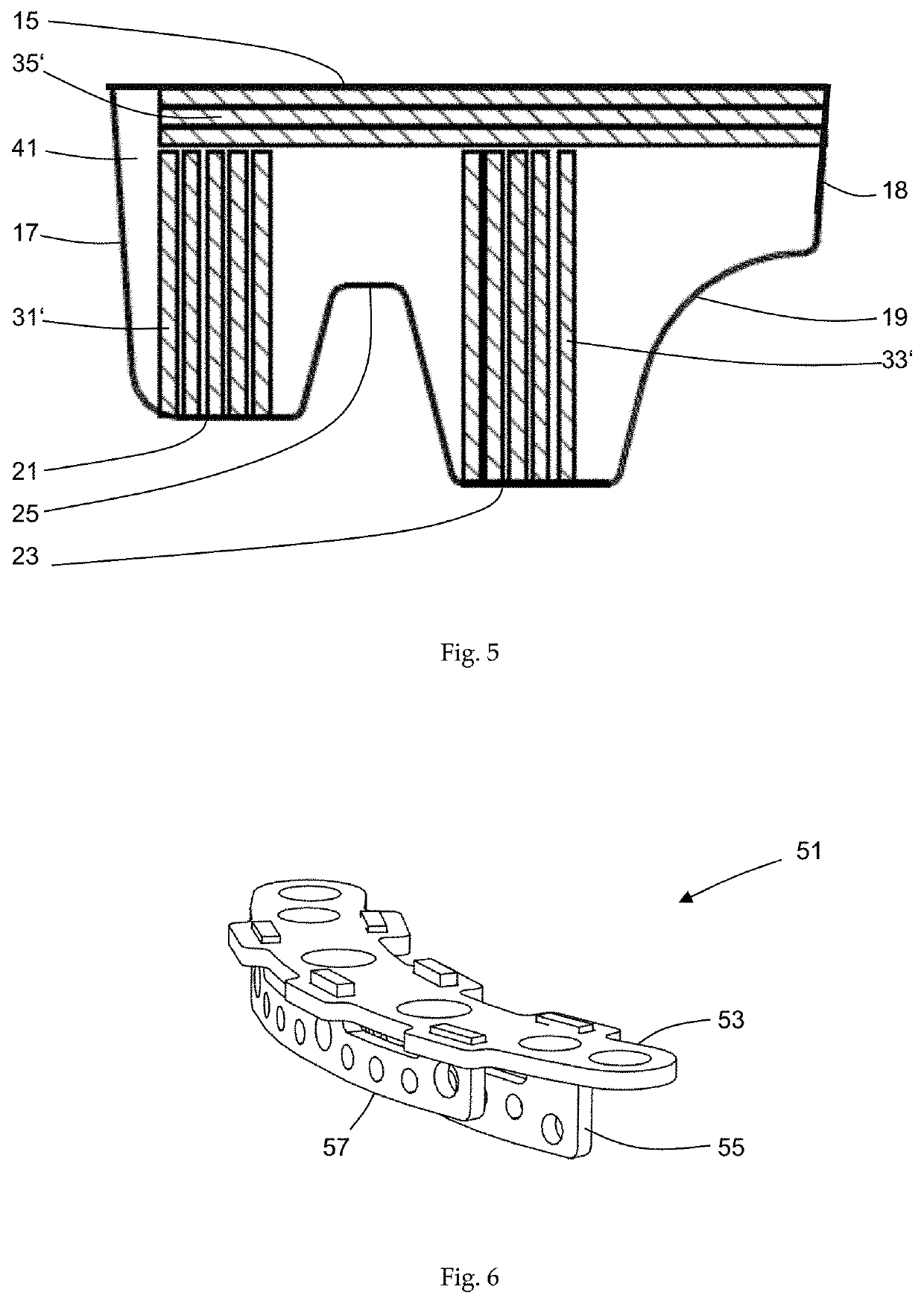Shoeing made of a fiber-plastic composite, in particular for horses or racehorses
a fiber-plastic composite and composite technology, applied in the field of horseshoes, can solve the problems of shortening the life of the shoeing, affecting the performance of the shoeing, and often experiencing unexpected cracks in the shoeing, so as to achieve low weight, high running speed, and low abrasion resistance
- Summary
- Abstract
- Description
- Claims
- Application Information
AI Technical Summary
Benefits of technology
Problems solved by technology
Method used
Image
Examples
Embodiment Construction
[0082]A method of producing a shoeing comprising at least the following successive steps:[0083]Providing a tool mold (negative mold) having a U-shaped cavity in a substantially horizontal working surface, the cavity being open at the top and its U-shape being defined by inner contour walls. Insofar as the fitting to be produced is to have at least one furrow, the tool shape is equipped with a furrow recess contour, that is to say an elevation running in a U-shape centrally in the U-shaped cavity. Insofar as the fitting to be produced is to have recesses for hoof nails, the tool mold is equipped with a plurality of pin-like elevations which are distributed centrally in the U-shaped cavity on a U-shaped line and which rise from the cavity base of the groove elevation to the level of the working surface.[0084]Optional use of an abrasion protection.[0085]Inserting a plurality of flattened tubes (31, 33) or bands (31′, 33′) into the cavity in such a way that they follow the U-shaped curv...
PUM
| Property | Measurement | Unit |
|---|---|---|
| angle | aaaaa | aaaaa |
| angle | aaaaa | aaaaa |
| angle | aaaaa | aaaaa |
Abstract
Description
Claims
Application Information
 Login to View More
Login to View More - R&D
- Intellectual Property
- Life Sciences
- Materials
- Tech Scout
- Unparalleled Data Quality
- Higher Quality Content
- 60% Fewer Hallucinations
Browse by: Latest US Patents, China's latest patents, Technical Efficacy Thesaurus, Application Domain, Technology Topic, Popular Technical Reports.
© 2025 PatSnap. All rights reserved.Legal|Privacy policy|Modern Slavery Act Transparency Statement|Sitemap|About US| Contact US: help@patsnap.com



